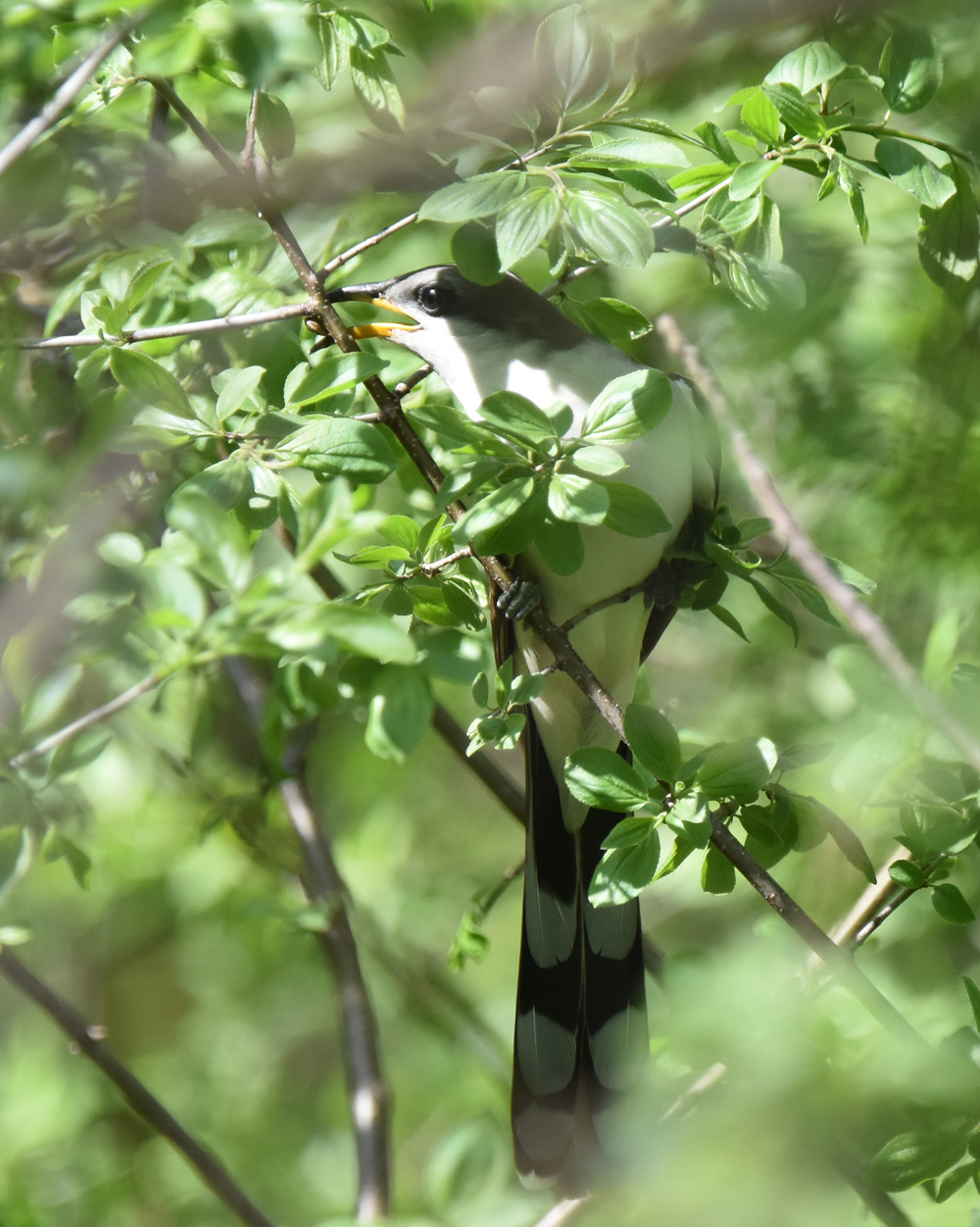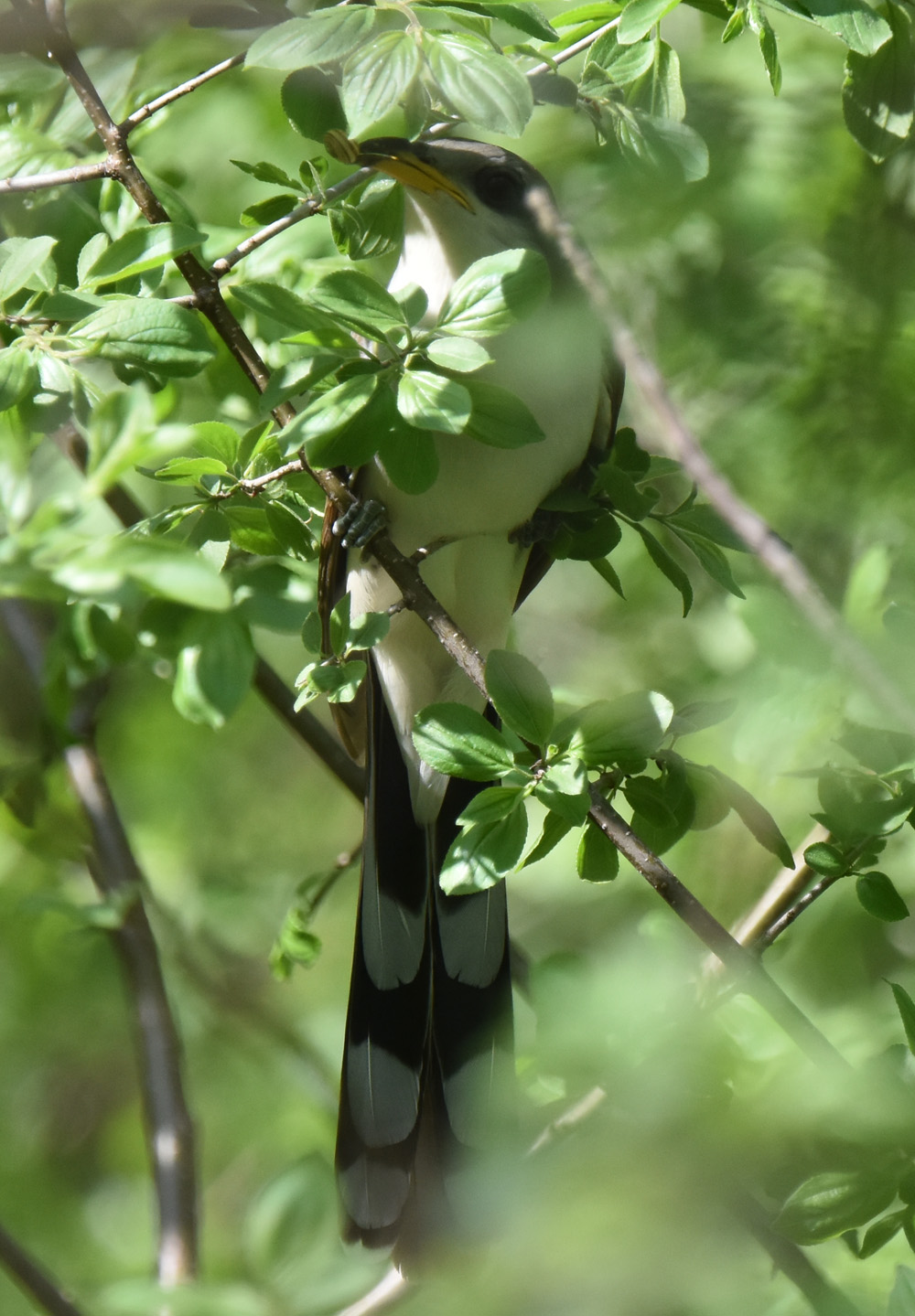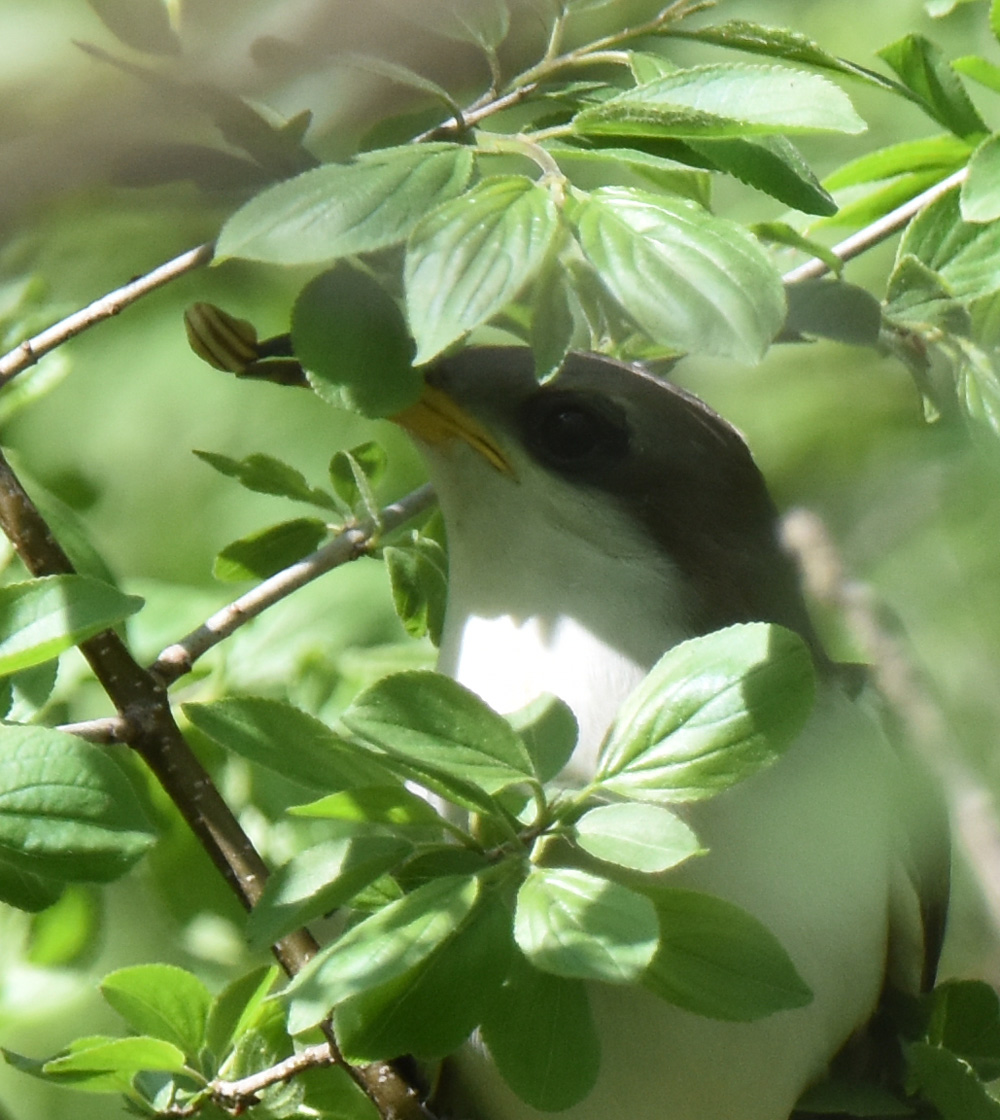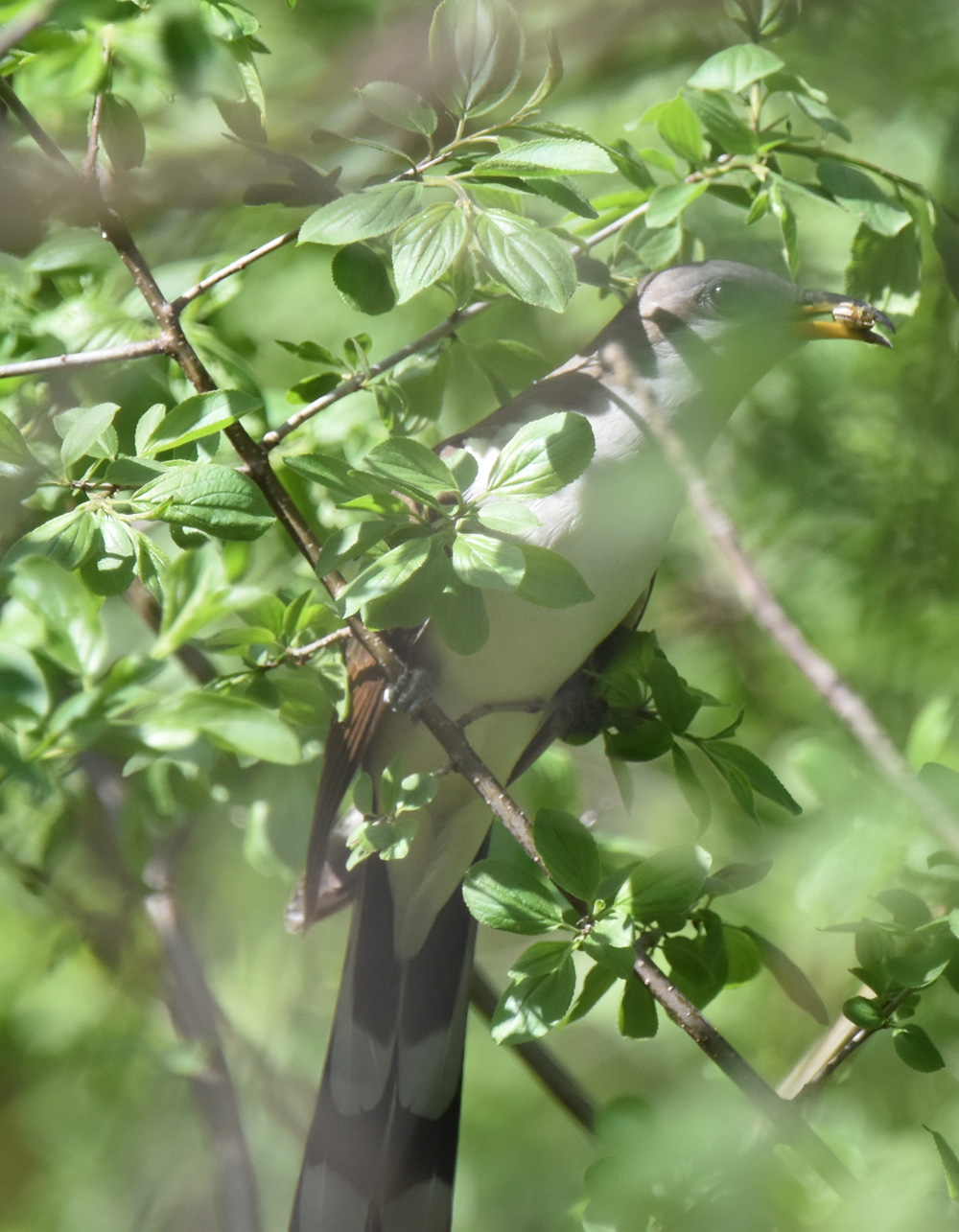We’re having a two-day heat wave yesterday and today which means the butterflies are out but many of the migrating birds are zipping north without wasting time. So when I went down near the Lake today to check a small wood lot, I wasn’t expecting to see much of interest. Well, I might have been hoping to see a Canada Warbler but that’s not the same as counting on it. To my surprise, I found a Yellow-billed Cuckoo instead.
If Cuckoos Are Not Uncommon Why Don’t We See More of Them?
Yellow-billed Cuckoos are not rare in southern Ontario. They can be difficult to notice, though, since they prefer to hunt for large caterpillars, like Tent Caterpillars, among the leafy branches often at the tops of trees.
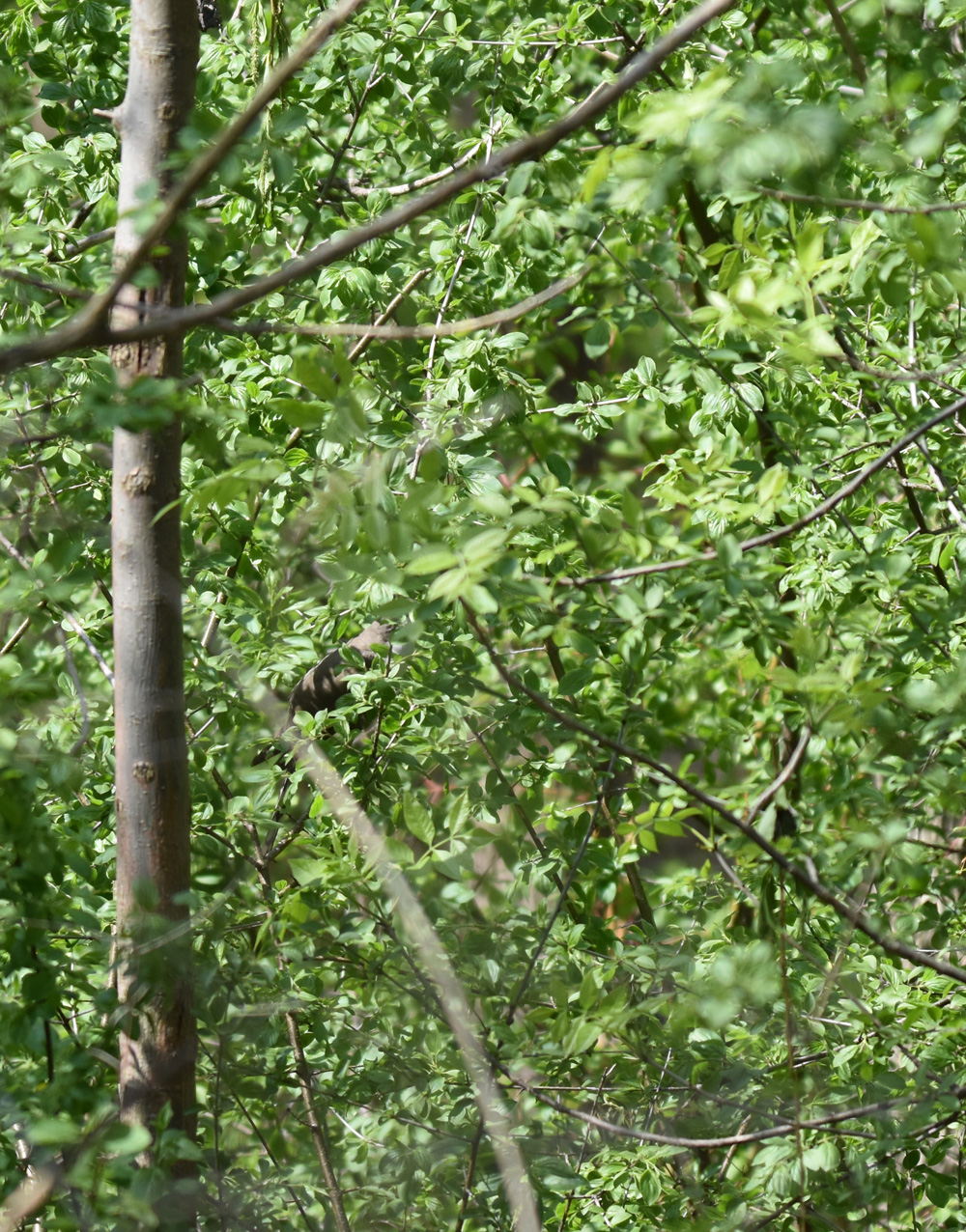
This is what I saw at first: Even when down low, they aren’t obvious birds!
Canadian Cuckoos are Elongated Brown Birds with White Fronts and Black and White Tails
When I found this bird, I just noticed a large grey brown bird with a white chest was in a Buckthorn thicket. I started taking photos immediately, while waiting for my brain to wake up and tell me what kind of bird it was. When it moved and showed a very long tail with distinct black and white markings, I realized it was a Cuckoo.
Then it turned its head and I could clearly see the bill was yellow — making it a Yellow-billed Cuckoo. I have seen these birds before, at the Riverwood Conservancy and along Sixteen Mile Creek, but I’ve never seen one so close. (I did get a really good look at a Black-billed Cuckoo once, though.)
What Is a Yellow-billed Cuckoo Doing in a Buckthorn Thicket?
Cuckoos arrive back in southern Ontario in mid-May along with the warblers. Since they prefer to eat large, often fuzzy, caterpillars there isn’t much point in them coming back sooner. So I wasn’t flabberghasted to see this one. I was surprised to see it down low in a thicket of Buckthorn shrubs, though. I don’t usually find many large caterpillars eating Buckthorn.
I could see, though, that the Cuckoo had found something it wanted to eat.
When I got home, I zoomed the photos on the computer starting from the last shots and working my way back towards the first. I couldn’t figure out exactly what was in its beak until half-way along: the Cuckoo had picked up one of those large “humbug”-striped snails. It cracked it open and then ate it.
Checking the internet, I found on the Texas Parks and Wildlife site, among others, that Yellow-billed Cuckoos are known to eat snails. I didn’t know it, though, so I learned something today.
Now if only I could coax a Cuckoo to visit my back yard and decimate some of my “humbug” snails!
Related Reading
Join In
Do Cuckoos live in a park or woodlot near you? Please share your sighting with a comment.

